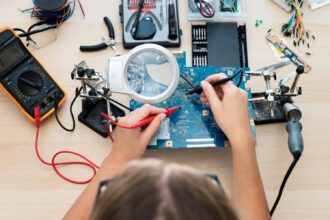When an appliance breaks down, homeowners are faced with a dilemma: repair or replace? The decision can be overwhelming, especially considering the cost and convenience implications. In this article, we’ll delve into the factors to consider when deciding between appliance repair and replacement.
Understanding Appliance Repair
Appliance repair involves fixing a faulty appliance to restore its functionality. A professional technician diagnoses the issue and replaces or repairs the damaged parts. This option is often preferred when the appliance is relatively new or has sentimental value.
Benefits of Appliance Repair
Repairing an appliance can be cost-effective, especially for newer models. It also helps reduce electronic waste, supporting eco-friendly practices. Additionally, repair services can provide a quick solution, minimizing downtime and inconvenience.
Limitations of Appliance Repair
However, repair may not always be the best option. If the appliance is old or has undergone frequent repairs, replacement might be more feasible. Furthermore, some appliances may be beyond repair due to obsolete parts or manufacturer discontinuation.
Understanding Appliance Replacement
Appliance replacement involves purchasing a new appliance to replace the faulty one. This option is often preferred when the appliance is outdated, inefficient, or has broken down repeatedly.
Benefits of Appliance Replacement
Replacing an appliance can provide improved performance and efficiency, leading to lower energy bills. New appliances often come with advanced features, enhancing user experience. Additionally, replacement eliminates the need for frequent repairs, reducing maintenance costs.
Limitations of Appliance Replacement
However, replacing an appliance can be costly upfront, especially for high-end models. It also contributes to electronic waste, contradicting eco-friendly practices. Furthermore, replacing an appliance may require adjustments to kitchen layouts or decor.
Factors to Consider: Age and Condition
When deciding between repair and replacement, consider the age and condition of the appliance. If the appliance is relatively new (less than 5 years old) and in good condition, repair might be the better option. Conversely, if the appliance is old or has broken down repeatedly, replacement is likely more feasible.
Factors to Consider: Cost
The cost of repair versus replacement is a crucial factor. Compare the cost of repair services to the price of a new appliance. If the repair cost exceeds 50% of the appliance’s value, replacement might be more economical.
Factors to Consider: Energy Efficiency
Energy efficiency is another essential consideration. If the appliance is outdated or inefficient, replacing it with an energy-efficient model can lead to long-term savings on utility bills.
Factors to Consider: Personal Preferences
Personal preferences also play a role in the decision-making process. If you value having the latest technology or specific features, replacement might be the better option. Conversely, if you’re attached to your appliance or prefer to maintain its functionality, repair is likely more suitable.
Case Studies: Real-Life Examples
To illustrate the decision-making process, let’s consider a few real-life examples:
- Scenario 1: A homeowner’s 3-year-old refrigerator breaks down. The repair cost is $500, which is approximately 30% of the appliance’s value. In this case, repair is likely the better option.
- Scenario 2: A homeowner’s 10-year-old washing machine requires frequent repairs, with a cumulative cost exceeding $1,000. Replacement with an energy-efficient model would be more feasible in this scenario.
Deciding between appliance repair and replacement requires careful consideration of various factors, including age, condition, cost, energy efficiency, and personal preferences. By weighing these factors, homeowners can make informed decisions that balance their needs, budget, and convenience requirements.
in the article, including appliance repair and replacement, home maintenance, cost savings, energy efficiency, sustainability, and consumer education.
